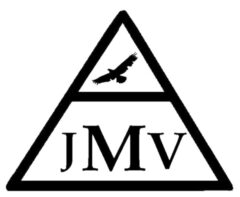Victor Perez, Jamille Pasco
Cite
Perez V, Pasco J. Identifying asynchronies: Expiratory work. J Mech Vent 2023; 4(3):125-128.
Abstract
Mechanical ventilation is used to improve gas exchange and unload the respiratory muscles allowing for their rest and recovery, which require good synchronization between the patient and the ventilator.
Spontaneous respiratory effort is generally preferred because it reduces atelectasis, improves oxygenation, and may prevent disuse diaphragm atrophy. Nevertheless, vigorous spontaneous effort can cause both lung injury and diaphragm injury (myotrauma). These injuries lead to prolonged ventilation, difficult weaning, and increased morbidity and mortality.
Normal expiration is passive due to the recoil of the lungs and chest wall. In mechanical ventilation, during expiration the ventilator controls the pressure (ie, the target value is PEEP), therefore, we must look at the flow and volume waveforms to see the physiology and patient-ventilator interactions. In expiration the patient-ventilation interaction is not characterized by timing but by work. Expiratory effort (ie, negative Pmus) will deform the flow waveform in a negative direction (away from baseline).
Keywords
Synchronization, Spontaneous effort, Lung injury, Myotrauma, Expiratory effort
References
| 1. Ge H, Duan K, Wang J, et al. Risk factors for patient-ventilator asynchrony and Its Impact on clinical outcomes: Analytics based on deep learning algorithm. Front Med 2020; 7(597406). https://doi.org/10.3389/fmed.2020.597406 PMid:33324663 PMCid:PMC7724969 | |||
| 2. Piquilloud L, Jolliet P, Revelly JP. Automated detection of patient-ventilator asynchrony: new tool or new toy? Critical Care 2013; 17(1015). https://doi.org/10.1186/cc13122 PMid:24252458 PMCid:PMC4059380 | |||
| 3. Blanch L, Villagra A, Sales B, et al. Asynchronies during mechanical ventilation are associated with mortality. Intensive Care Med. 2015; 41:633-641. https://doi.org/10.1007/s00134-015-3692-6 PMid:25693449 | |||
| 4. Béduneau G, Pham T, Schortgen F, et al. Epidemiology of weaning outcome according to a new definition: The WIND study. Am J Respir Crit Care Med 2017; 195:772-783. https://doi.org/10.1164/rccm.201602-0320OC PMid:27626706 | |||
| 5. Dres M, Goligher EC, Heunks LM, et al. Critical illness-associated diaphragm weakness. Intensive Care Med 2017; 43:1441-1452. https://doi.org/10.1007/s00134-017-4928-4 PMid:28917004 | |||
| 6. Goligher EC, Fan E, Herridge MS, et al. Evolution of diaphragm thickness during mechanical ventilation: impact of inspiratory effort. Am J Respir Crit Care Med 2015; 192(9):1080-1088. https://doi.org/10.1164/rccm.201503-0620OC PMid:26167730 | |||
| 7. Martin AD, Joseph AM, Beaver TM, et al. Effect of intermittent phrenic nerve stimulation during cardiothoracic surgery on mitochondrial respiration in the human diaphragm. Crit Care Med 2014; 42(2):e152-e156. https://doi.org/10.1097/CCM.0b013e3182a63fdf PMid:24126442 PMCid:PMC3947040 | |||
| 8. Dres M, Rittayamai N, Brochard L. Monitoring patient-ventilator asynchrony. Curr Opin Crit Care. 2016; 22(3):246-253. https://doi.org/10.1097/MCC.0000000000000307 | |||
| 9. Bonetto C, Calo MN, Delgado MO, et al. Modes of pressure delivery and patient-ventilator interaction. Respir Care Clin N Am 2005; 11:247-263. https://doi.org/10.1016/j.rcc.2005.01.002 PMid:15936692 | |||
| 10. Arnal JM. Monitoring during expiration. In Arnal JM, Chatburn RL. Monitoring Mechanical Ventilation Using Ventilator Waveforms. 1st ed.: Springer Cham; 2018:59-80. https://doi.org/10.1007/978-3-319-58655-7_3 | |||
| 11. Mireles-Cabodevila E, Siuba M, Chatburn R. A taxonomy for patient-ventilator interactions and a method to read ventilator waveforms. Respir Care 2022; 67(1):129-148. https://doi.org/10.4187/respcare.09316 PMid:34470804 | |||
| 12. Shi ZH, Jonkman A, de Vries H, et al. Expiratory muscle dysfunction in critically ill patients: towards improved understanding. Intensive Care Med. 2019 August; 45(8):1061-1071. https://doi.org/10.1007/s00134-019-05664-4 PMCid:PMC6667683 | |||
| 13. Kondili E, Prinianakis G, Georgopoulos D. Patient-ventilator interaction. Br J Anaesth 2003; 91(1):106-119. https://doi.org/10.1093/bja/aeg129 PMid:12821570 | |||
| 14. Doorduin J, Roesthuis LH, Jansen D, et al. Respiratory muscle effort during expiration in successful and failed weaning from mechanical ventilation. Anesthesiology 2018; 129(3):490-501. https://doi.org/10.1097/ALN.0000000000002256 PMid:29771711 | |||
| 15. Smith J, Bellemare F. Effect of lung volume on in vivo contraction characteristics of human diaphragm. J Appl Physiol 1987; 62:1893-1900. https://doi.org/10.1152/jappl.1987.62.5.1893 PMid:3597263 | |||
| 16. Derenne JP, Macklem PT, Roussos C. The respiratory muscles: mechanics, control, and pathophysiology. Part 2. Am Rev Respir Dis 1978; 118:373-390. https://doi.org10.1164/arrd.1978.118.1.119 PMID: 150242 |
